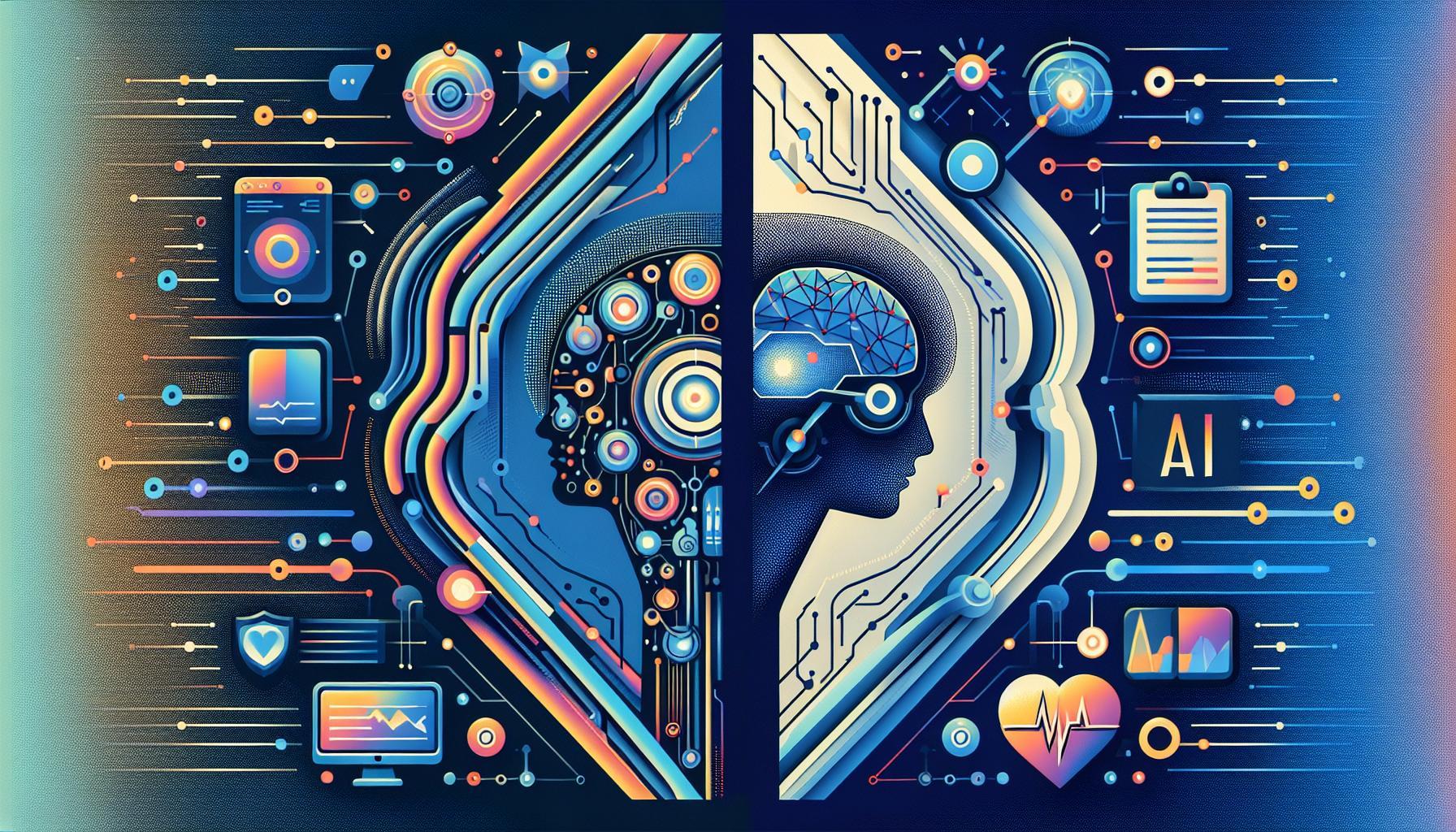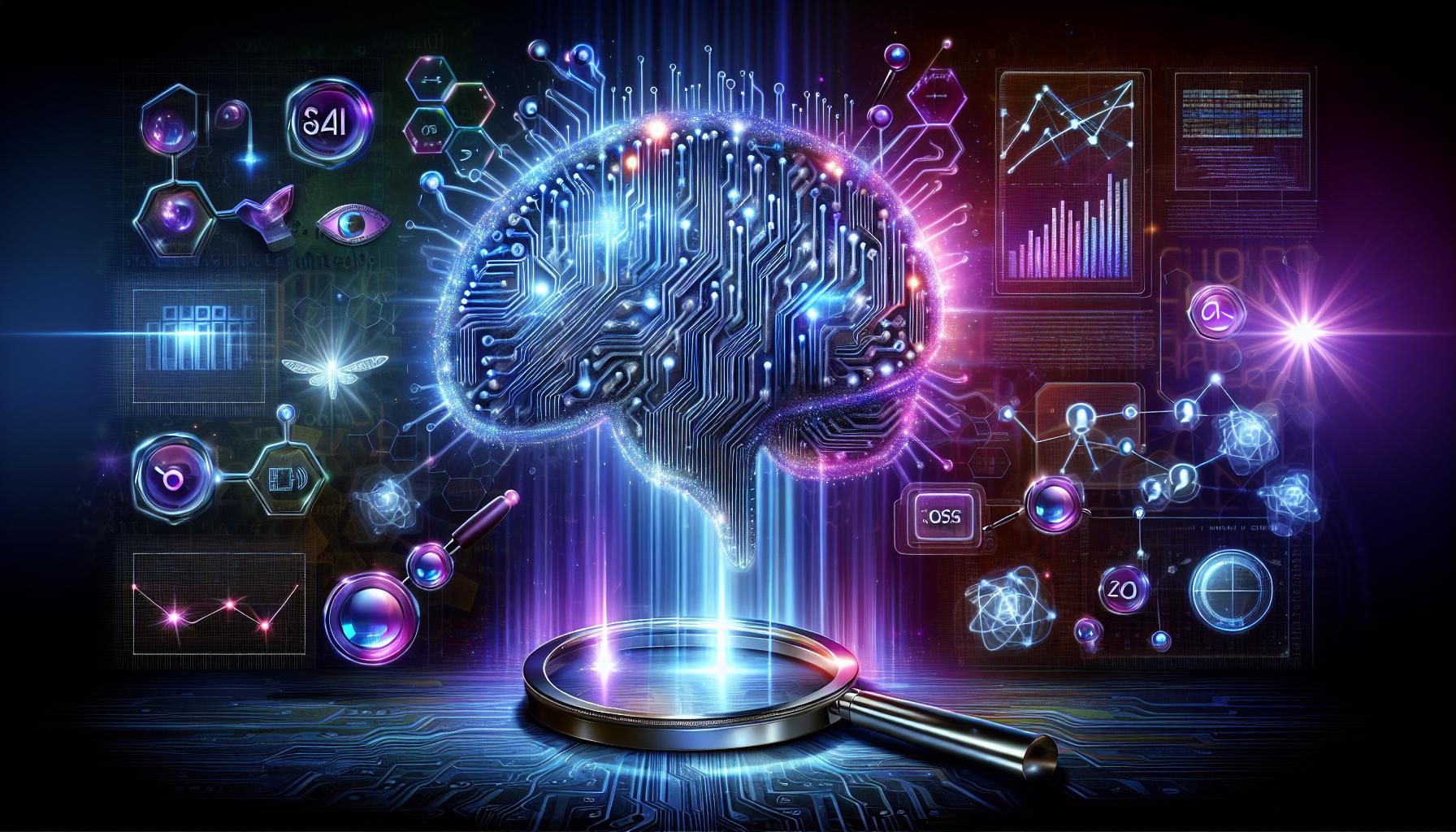In a world inundated with short clips and quick tracks, the challenge lies in transforming fleeting musical ideas into fully realized compositions. Harnessing AI tools for music creation not only streamlines this process but also enhances creativity and artistic expression. Discover how extending brief musical excerpts into complete pieces can revolutionize content creation and bring new life to your projects.
Understanding Music AI: What It Can Do for Your Tracks
The revolutionary landscape of music creation has been profoundly altered by the advent of artificial intelligence, offering tools that can elevate the creative process to new heights. For musicians and producers looking to turn fragments of inspiration into complete compositions, Music AI stands as a powerful ally. With capabilities that range from generating melodies to orchestrating complex arrangements, these tools can breathe life into even the most rudimentary musical ideas.
One of the most compelling aspects of Music AI is its ability to analyze and reconstruct short tracks, transforming them into fully fleshed-out pieces. By employing advanced algorithms, platforms like AIVA and Google DeepMind’s Lyria can seamlessly expand brief snippets into rich musical tapestries that retain the original’s essence while adding depth and complexity. Here’s how you can effectively harness Music AI for your creative projects:
Key Functions of Music AI in Composition
- Melody Generation: Tools like MuseNet from OpenAI create intricate melodies by recognizing patterns across vast collections of MIDI files. This enables musicians to experiment with unique melodic lines that might not have occurred to them initially.
- Style Fusion: AI can blend multiple genres, allowing you to merge elements of classical, pop, and jazz within a single track. This genre-bending capability opens up new musical avenues, enriching your compositions with diverse influences.
- Arranging and Orchestration: By utilizing AI’s orchestration capabilities, you can expand a simple melody into a full arrangement, with parts for strings, brass, and percussion. Programs like AIVA facilitate this easily, even for those with minimal knowledge of music theory.
For practical implementation, consider the following steps to integrate Music AI into your workflow:
- Start with a Simple Idea: Work out a brief melody or chord progression that resonates with you.
- Choose Your AI Tool: Select an AI music generator that fits your needs. For instance, if you want rich orchestration, AIVA might be your go-to, while MuseNet excels in style blending.
- Input and Experiment: Feed your initial idea into the Music AI application. Use its algorithms to explore different arrangements and expansions.
- Refine and Edit: Once the AI provides a proposal, take the time to refine it. Add your personal touch to ensure that the final product is distinctly yours.
Through these steps, you’ll not only learn how to better use AI tools but also enhance your own musical skills, ultimately leading to compositions that are both innovative and true to your artistic vision. Embracing the potential of Music AI can reveal new dimensions in your musical projects, transforming short tracks into expansive, engaging compositions.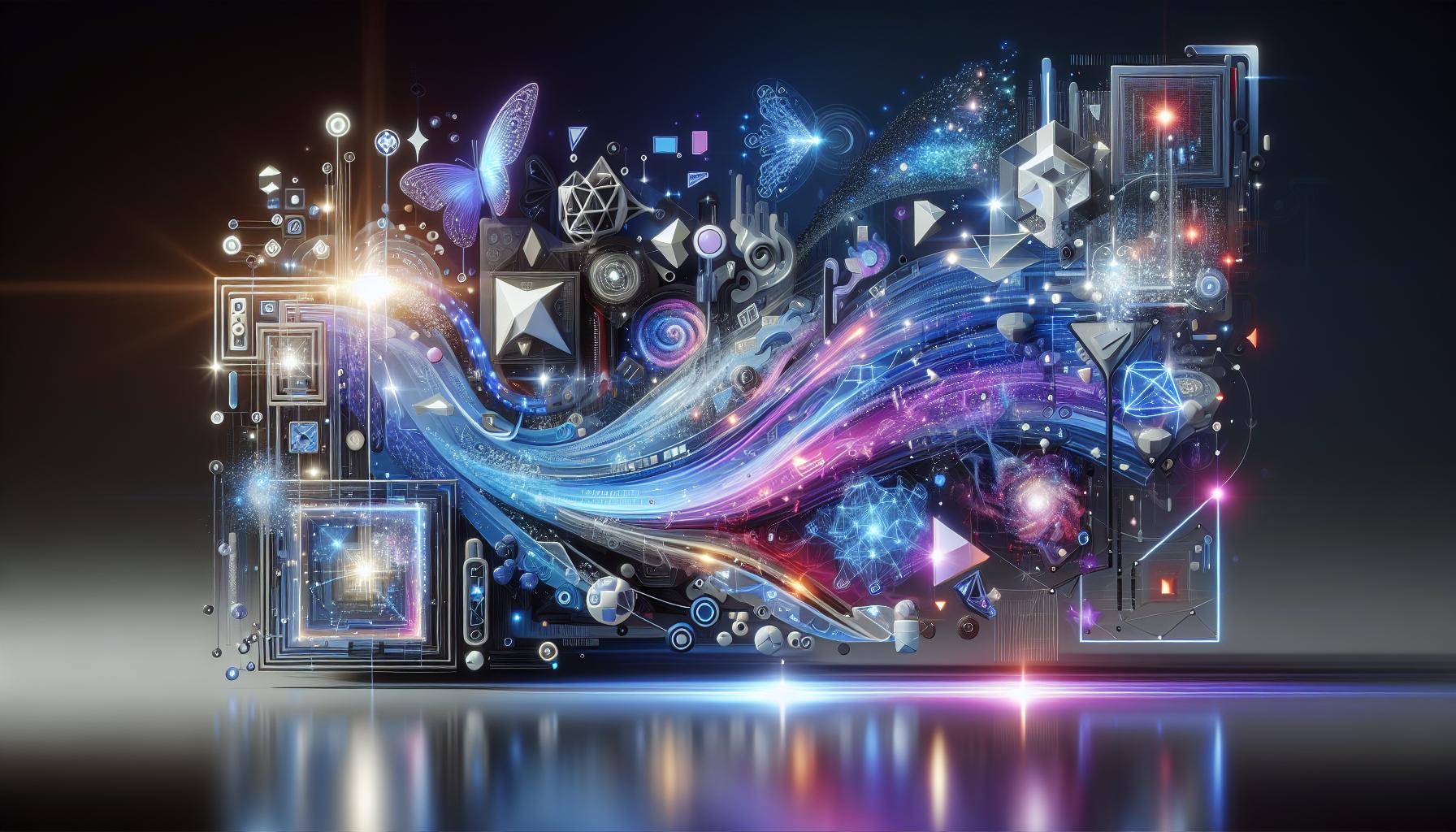
The Process: How AI Transforms Short Clips into Full-length Pieces
The landscape of music creation has been dramatically reshaped by technology, and AI plays a crucial role in this evolution. With tools like Extend Music AI, artists can seamlessly transform short clips into full-length compositions, revolutionizing the way music is produced and experienced. The ability to expand brief musical ideas into complete tracks not only saves time but also unleashes creative potential that may have otherwise remained dormant.
How It Works
At its core, the process employs advanced algorithms that analyze the characteristics of short audio clips. These algorithms consider various elements such as melody, harmony, and rhythm to generate extended versions that maintain the integrity of the original piece. As users upload their clips, the AI system processes them to identify patterns and structures, allowing it to produce a cohesive full-length composition.
Key Benefits
The advantages of using Extend Music AI to expand short tracks are numerous. Here are a few notable ones:
- Enhanced Creativity: Artists can leverage AI-generated extensions to overcome creative blocks, gaining fresh perspectives and ideas for their projects.
- Efficiency: Instead of spending hours crafting a full composition from scratch, musicians can quickly generate longer pieces, significantly speeding up the production process.
- Accessibility: This tool democratizes music creation, allowing anyone, regardless of their technical skill level, to create polished, professional soundtracks.
Practical Applications
Real-world applications of Extend Music AI are already making waves across various genres. For example, independent musicians can enhance their demos, filmmakers can quickly generate scores to accompany visuals, and content creators on platforms like YouTube can produce engaging background music without the need for extensive musical knowledge.
To illustrate the transformative potential of AI in music composition, the following table outlines the typical workflow from a short clip to a complete track:
| Step | Description |
|---|---|
| 1. Clip Upload | Users upload a short audio clip to the AI platform. |
| 2. Analysis | The AI analyzes the clip to identify notes, dynamics, and structure. |
| 3. Composition Generation | The AI generates a full-length composition based on the analysis. |
| 4. Review & Edit | Users can refine and personalize the AI-generated piece. |
Through Extend Music AI, creators can efficiently convert their musical snippets into elaborate pieces, showcasing the profound impact of AI on the future of music composition. This technology not only streamlines the creative process but also enhances the artistic capabilities of musicians, making it easier than ever to bring their musical visions to life.
Choosing the Right Tools: A Guide to Music AI Software and Platforms
In the ever-evolving world of music production, the rise of artificial intelligence is empowering creators to explore innovative ways to develop their sound. As technology advances, producers are no longer confined to traditional methods; they can now tap into AI tools that offer remarkable capabilities for transforming short tracks into complete compositions. With the right software and platforms, even a simple melody can bloom into a full-fledged piece of art, showcasing the vast potential of AI in music.
When selecting the appropriate music AI tools for your projects, it’s crucial to consider a few key features that can significantly enhance your creative process. Look for software that offers advanced melody generation, rhythmic enhancements, and seamless integration with your existing workflow. Some of the standout tools in 2025 include:
- LALAL.AI: This innovative tool excels at seamlessly extracting vocals and instrumentals from audio tracks, allowing you to isolate elements for remixing or re-composing your music without compromising quality.
- AIVA: Ideal for those wanting to generate original music, AIVA uses deep learning algorithms to compose soundtracks that can evoke various emotional responses, perfect for film scoring or gaming backgrounds.
- Amper Music: A user-friendly platform that lets musicians create unique music by simply adjusting a few parameters, making it accessible for both novices and seasoned professionals.
Key Considerations for Choosing AI Music Software
As you contemplate which AI tools to adopt, ponder the following factors to ensure you make a well-informed choice:
| Feature | Importance | Examples of Tools |
|---|---|---|
| Input Flexibility | Ability to work with various audio formats and styles. | LALAL.AI, Amper Music |
| Ease of Use | Intuitive interfaces that don’t hinder creativity. | AIVA, BandLab |
| Collaboration Features | Support for team-based projects and sharing. | Soundtrap, Splice |
| Outcome Quality | High-quality music that meets industry standards. | Landr, Ample Sound |
By carefully evaluating these aspects, you can select the ideal AI music production software to turn your short tracks into complete, polished compositions. Emphasizing tools that align well with your specific needs and artistic vision will allow you to harness the full potential of AI while maintaining your unique sound in this rapidly shifting musical landscape.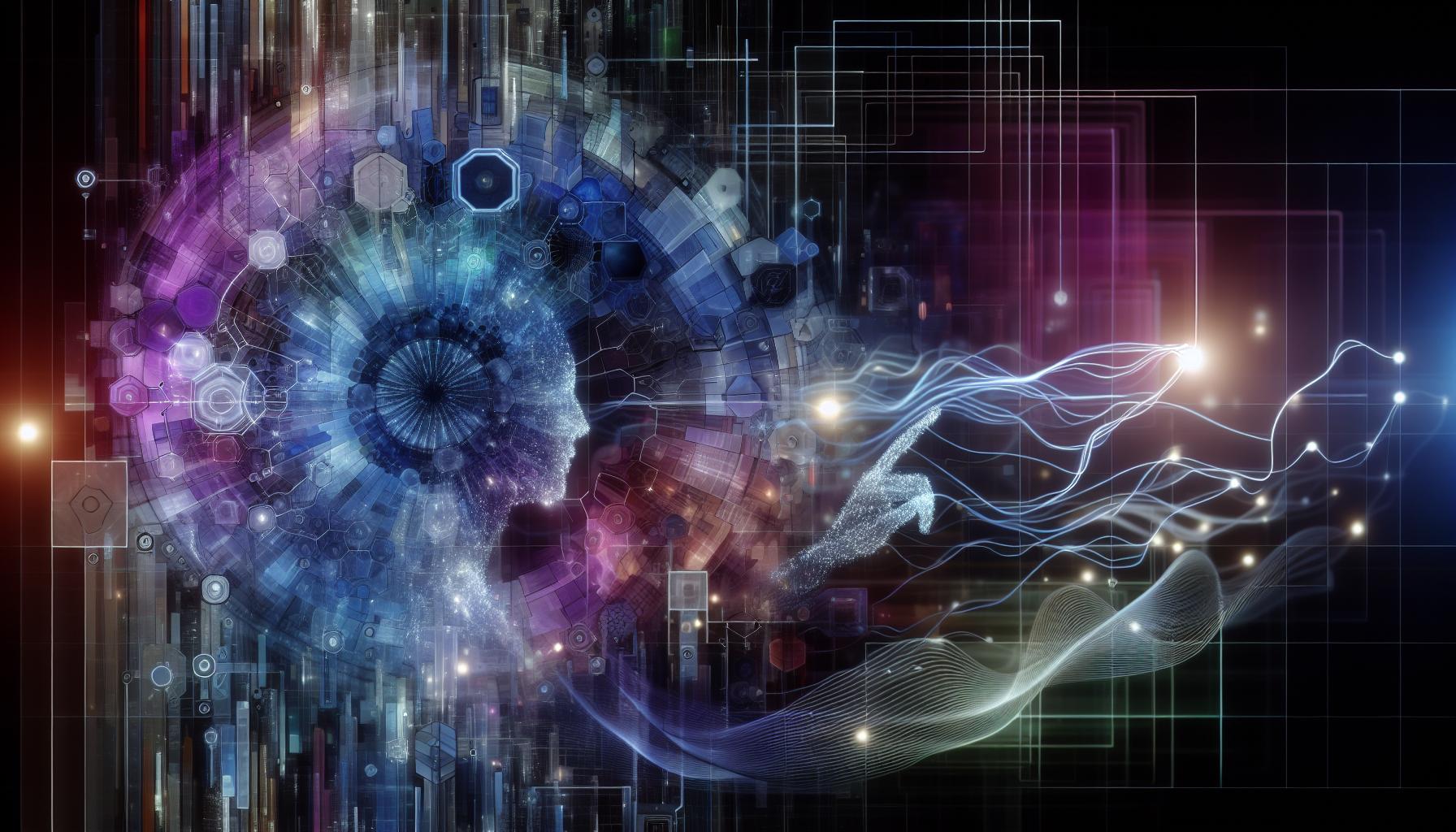
Creative Collaboration: Working with AI to Enhance Your Compositions
In today’s rapidly evolving music landscape, artists are increasingly leveraging technology to push creative boundaries. One of the most impressive advancements in recent years is the use of artificial intelligence (AI) to assist musicians in enriching their compositions. By utilizing tools like “Extend Music AI,” producers and songwriters can take short, initial ideas and transform them into fully realized tracks, enhancing both their musical output and the creative process.
Embracing AI in the Creative Process
Integrating AI into composition doesn’t replace the artistry of musicians; rather, it complements and amplifies it. By analyzing vast datasets of music, AI systems can suggest harmonies, rhythms, and melodies that align with the creator’s original intent. This collaboration enables artists to explore innovative soundscapes and refine their work in ways that would be time-prohibitive through traditional methods. For example, after inputting a short melody, an artist can receive rich variations of that theme, helping them to expand their musical vocabulary and find novel inspirations.
How to Effectively Collaborate with AI
To maximize the benefits of AI tools like “Extend Music AI,” artists should consider the following practical steps:
- Start with a Foundation: Input a basic melody or chord progression as a launchpad. The AI can enhance this foundation by suggesting complementary elements.
- Iterate and Experiment: Use the AI’s outputs to brainstorm different arrangements, modifying the generated suggestions until they align with your vision.
- Feedback Loop: Treat the process as a conversation. Provide feedback to the AI’s suggestions to refine its understanding of your artistic style over time.
Real-World Examples of Successful AI Collaborations
Numerous artists have already adopted AI technologies, witnessing remarkable results. An independent musician might use AI-generated instrumentals from “Extend Music AI” to fill gaps in their demo recordings, allowing them to produce polished tracks without extensive studio time. This approach not only saves resources but also enables more frequent releases, keeping audiences engaged.
Moreover, established acts are collaborating with AI to explore fresh creative avenues. Using AI tools to assist in songwriting or melody creation, these artists find themselves breaking through creative blocks and venturing into unexplored genres or styles.
With AI’s rapidly advancing capabilities, the prospects for music production are not only exciting but also redefine how creativity is approached in the music industry. By embracing such technology, artists are empowered to enhance their compositions, resulting in innovative and captivating musical works that resonate with audiences worldwide.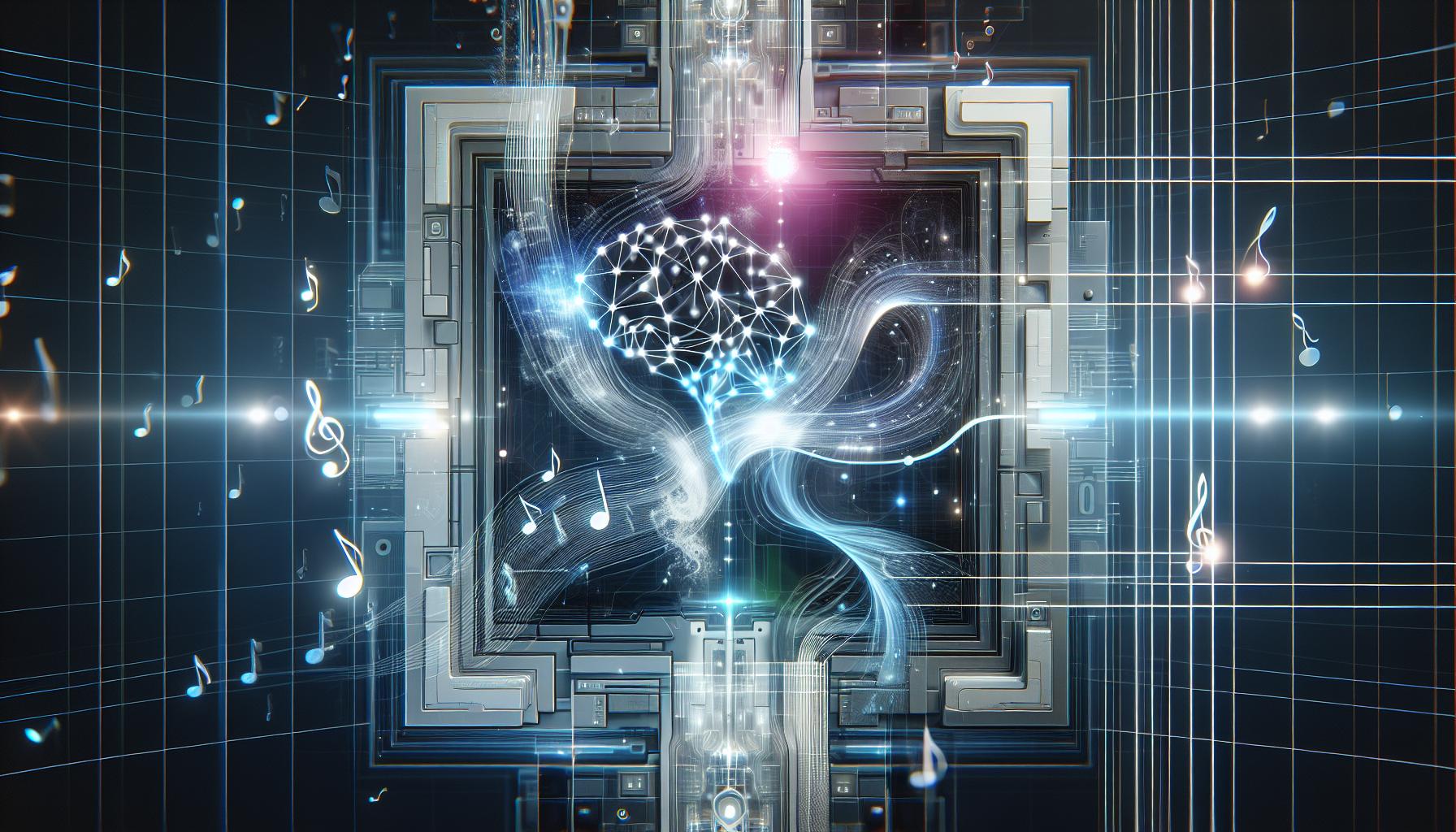
Critical Considerations: Navigating Copyright and Ownership in AI Music
As artificial intelligence continues to revolutionize the music industry, the complexities surrounding copyright and ownership in AI-generated compositions become increasingly pertinent. With tools like Extend Music AI empowering users to transform short tracks into complete songs, understanding the intricacies of intellectual property rights is essential for creators and users alike. The advancements in AI create an environment where music can be produced with minimal human input, prompting critical questions about who holds the rights to these innovative creations.
The Challenge of Attribution
In traditional music production, it is often clear who holds the rights to a composition: typically, this includes the songwriter, the producer, and any featured artists. However, with AI-generated music, ownership can become murky. When a user inputs a prompt into Extend Music AI, the resulting composition is influenced by algorithms that draw from vast datasets. The question arises: do users have the rights to the music generated, or does the credit lie with the developers of the AI? Legal experts suggest that the title of ownership could end up being shared or disputed unless clear agreements are established at the outset of creating music with AI tools [[2]].
Licensing Considerations
Beyond ownership, licensing plays a critical role in how AI-generated music can be used and monetized. For creators employing platforms like Extend Music AI, understanding licensing agreements is crucial. While some services may provide royalty-free music, others may impose restrictions on commercial use. It is important for users to seek clarity on the terms associated with their generated tracks, ensuring they retain the ability to distribute or sell their music without infringement. Key questions to consider include:
- Is the AI-generated music considered a derivative work?
- What rights do I retain when using the platform?
- Are there any fees associated with licensing the music?
Practical Guidance for Creators
For those looking to harness the power of AI music generation, adhering to best practices can safeguard your rights and maximize your creative output. Here are actionable steps:
- Read the Fine Print: Before using Extend Music AI or similar platforms, thoroughly review their terms of service and agreements to understand your rights.
- Keep Records: Document the prompts you provide and the resulting compositions. This can help establish a timeline and context for ownership if disputes arise.
- Consult Legal Experts: When in doubt, seek legal guidance to navigate the evolving landscape of AI music copyright effectively.
By taking these proactive measures, creators can better position themselves in an increasingly complex environment where AI music technology blurs the lines of traditional copyright and ownership.
Tips for Musicians: Maximizing the Potential of AI in Composition
In the rapidly evolving landscape of music production, leveraging AI tools can dramatically enhance a musician’s workflow, enabling the transformation of short tracks into intricate compositions. Embracing technologies such as AI music generators allows artists not only to streamline their creative processes but also to explore new sonic possibilities that may have previously seemed unattainable. By strategically incorporating AI, musicians can boost their output and inject fresh creativity into their projects.
Explore AI Music Composition Tools
Familiarizing yourself with various AI-driven tools is essential for maximizing their potential. Here are some prominent options:
- Google Magenta: This project provides tools like Magenta Studio, which integrates with Ableton Live, enabling users to utilize features such as Continue, Groove, and Drumify to expand upon initial ideas.
- AIVA: With the capability to generate compositions in over 250 styles, AIVA allows musicians to download tracks in any format, providing flexibility in production and distribution.
- DiffRhythm: This AI platform utilizes cutting-edge diffusion model technology, allowing for the creation of everything from simple melodies to complex arrangements, making it an excellent resource for transformative composition.
Iterate and Experiment
Using AI tools effectively involves iterative testing and experimentation. Start by feeding your initial short tracks into these AI platforms, and explore the variations they produce. For example, by utilizing Magenta’s “Groove” tool, you can generate unique rhythmic patterns that alter the feel of your piece. Each iteration could inspire new sections of a composition or lead to unexpected musical direction, enriching the overall output.
Collaborative Creation
Consider collaborating with these AI models as partners rather than mere tools. This mindset can significantly broaden your compositional horizon. For instance, when working with a platform like AIVA, you can generate a piece based on specific emotional criteria and then refine it further to ensure it aligns with your artistic vision. By embracing this collaborative approach, musicians can cultivate a unique sound that reflects both human creativity and artificial intelligence’s imaginative capabilities.
Incorporating AI into your music composition workflow not only enhances productivity but also allows for the reimagining of musical ideas. As you continue to experiment with short tracks through various AI applications, you’ll find that the journey to complete compositions can become a rich and fulfilling creative experience.
Future Trends: The Evolving Role of AI in Music Production
As technology continues to advance, the landscape of music production is shifting dramatically, driven largely by innovations in artificial intelligence. With tools that once seemed futuristic now becoming commonplace, the ability to transform short tracks into complete compositions is becoming a hallmark of modern music creation. The rise of AI in the creative process is not just about efficiency; it’s also about pushing the boundaries of creativity and accessibility for musicians at all levels.
AI-Driven Composition Tools
The growing availability of AI tools like Extend Music AI is enabling artists to explore their musical ideas without the traditional barriers of time and skill. By leveraging AI algorithms, musicians can now seamlessly integrate beats, harmonies, and melodies that enhance their original fragments. This technology empowers producers to focus on the creative aspects of music while allowing AI to handle the intricate details of arrangement and mixing. As these platforms evolve, they will increasingly offer collaborative features, enabling real-time interaction between artists and AI partners, thus enriching the creative dialogue.
Enhanced Sound Design and Editing Capabilities
As AI continues to develop, its role in sound design and editing is evolving as well. Emerging AI tools utilize advanced neural networks to analyze and manipulate sound with precision. For instance, next-generation platforms might offer features that identify and extract unique musical elements across various genres, allowing producers to craft eclectic compositions tailored to niche audiences. This ability to dissect and recombine musical segments means that an artist can easily remix existing tracks or create entirely new soundscapes, making music production more versatile than ever.
- Seamless Integration: Future AI tools will integrate directly with digital audio workstations (DAWs), creating a more fluid workflow.
- Personalized Assistance: AI will adapt to a user’s style, providing tailored suggestions and enhancements that align with the artist’s vision.
- Real-Time Collaboration: AI could facilitate remote collaborations, allowing artists to co-create in virtual spaces across the globe.
The trend towards AI in music production not only makes the creation process more dynamic but also democratizes access to professional-quality tools. In a world where anyone can turn a simple idea into a full-fledged track with the help of AI, the potential for diverse musical expression is boundless. As technologies like Extend Music AI advance, they herald a future in which music continues to evolve, shaped by human creativity and augmented by the power of artificial intelligence.
Real-world Success Stories: Artists Thriving with AI-Enhanced Music
In the ever-evolving landscape of music production, artists are increasingly harnessing the power of artificial intelligence to amplify their creativity and streamline their workflows. The emergence of AI technologies has not only revolutionized the way music is made but has also opened new avenues for success for many musicians. Among these innovators are notable examples of artists using AI to extend their compositions from short tracks into full-fledged masterpieces, showcasing the transformative capabilities of tools like Extend Music AI.
One such success story lies with Grammy-winning producers who have embraced AI-enhanced music production tools. By applying mastering software like LANDR and iZotope, these artists have the ability to polish their tracks efficiently, allowing them to focus more on creativity rather than technicalities. This approach not only accelerates the production process but also elevates the quality of the final product, resulting in cleaner, professional-sounding music ready for the charts [[2]].
Another remarkable example is the collaboration between mainstream artists and AI platforms that generate unique soundscapes and melodies. Tools like Amper Music and AIVA enable musicians to experiment with new musical styles they might not have otherwise considered. These collaborations reflect a harmonious balance where AI contributes to the creative process, inspiring artists to explore genres and sounds that push the boundaries of conventional music [[1]].
As musicians integrate tools such as Extend Music AI, they can seamlessly transform shorter tracks into more elaborate compositions. This capability is particularly beneficial in optimizing content for diverse platforms, catering to the demands of platforms from TikTok to streaming services. Artists can maintain thematic elements and emotional resonance while enhancing the overall complexity of their music. By leveraging such AI technologies, they stand a better chance in today’s competitive industry, where unique and engaging content is crucial.
With AI shaping the music industry’s future, the collaboration between technology and artistry is not only a trend; it is a competitive advantage. As more success stories emerge, the narrative will shift towards a more collaborative landscape where artists and AI work hand-in-hand to create the hits of tomorrow.
Getting Started: Your First Steps in Extending Music with AI
When you’re ready to embark on the journey of enhancing your music creations, leveraging AI to extend your tracks can open up a world of possibilities. With advanced tools available today, you can transform short musical snippets into full-fledged compositions, breathing new life into your original ideas. Here’s a step-by-step guide to help you get started with extending your music using AI technology.
Choosing the Right AI Tool
Begin by selecting an AI music extender that fits your needs. Several platforms offer robust features for music enhancement:
- Extend Song AI: This tool allows for seamless extension of your music while ensuring you maintain ownership of the generated content, perfect for commercial use [[1]].
- Soundverse AI: This user-friendly generative model enables you to break free from fixed audio lengths, making it easy to experiment with your musical narratives [[2]].
- Singify AI Music Extender: Known for preserving the original style of your tracks, this tool adds new sections seamlessly, making it a favorite among producers [[3]].
Uploading Your Music
Once you’ve selected an appropriate tool, the next step is to upload your short track. Ensure your track is in a compatible format (usually .mp3 or .wav) before proceeding. Most platforms provide simple drag-and-drop interfaces, making it easy to get started. After upload, keep an eye on settings that might affect the style or length of the extension. Choosing the right parameters will help maintain the integrity of your composition.
Generating Extensions
After uploading, utilize the AI-generated features to extend your track. Many tools offer customization options that allow you to select styles, harmonies, and desired lengths for your music extension. For example, you can opt for a more dramatic buildup, additional verses, or an expanded instrumental section. Experiment with different combinations to see what resonates best with your original sound. This is where your creativity really shines.
Reviewing and Refining
After the AI has generated the extended version of your track, it’s vital to listen carefully and gauge how well the extension aligns with your vision. Don’t hesitate to make adjustments—most tools will allow you to tweak sections, add effects, or even remove parts that don’t fit. Take advantage of feedback loops with peers or mentors who can provide helpful insights on your work.
By following these straightforward steps in the realm of AI, you can easily transform your initial ideas into completed compositions, effectively utilizing the power of AI to enhance your musical projects.
The Craft of Composition: Blending Human Creativity with AI Innovation
The intersection of human creativity and artificial intelligence has opened new pathways in music composition, allowing artists to innovate and enhance their craft in unprecedented ways. For instance, the emergence of tools such as Extend Music AI has transformed the approach to creating longer and more complex musical pieces from short, initial tracks. This technology empowers musicians, enabling them to blend their creative instincts with AI-generated suggestions, resulting in richer and more dynamic compositions.
In practice, leveraging AI within the compositional process involves several actionable strategies:
- Experiment with AI-Assisted Composition: Utilize Extend Music AI to start with a brief melody or beat. The AI can analyze your inputs and expand them into a full composition, offering suggestions for harmonies, rhythms, and instrumentation.
- Refine Your Sound: As you create, use the AI to explore various genres and styles. This can help generate fresh ideas or unexpected variations on your original theme, providing a means to experiment without the usual constraints.
- Iterate and Collaborate: Engage in an iterative process where you provide feedback to the AI based on its outputs. This two-way communication can lead to continuous improvement in the quality of your music, making it a collaborative effort between human creativity and machine learning.
- Study Successful Integrations: Look into case studies or examples of artists who have successfully utilized AI tools in their work. Understanding how others have blended traditional techniques with innovative tools can inspire your own approach.
With these strategies, musicians can not only enhance their compositional skills but also embrace the potential of AI to break artistic boundaries. By using platforms like Extend Music AI, they can focus on personal expression while letting technology manage complex tasks involved in music production. This integration fosters a new era of creativity, where human intuition and machine efficiency coexist to create compelling musical narratives.
Q&A
What is Extend Music AI: Transform Short Tracks into Complete Compositions?
Extend Music AI is a technology that allows music creators to enhance short tracks into fuller compositions using artificial intelligence.
By analyzing existing musical elements, Extend Music AI generates new content that complements the original pieces. This process can help both amateur and professional musicians turn brief ideas into rich, expansive tracks that capture deeper emotions and narratives.
How does Extend Music AI work?
Extend Music AI utilizes advanced algorithms to analyze the structure, melody, and harmony of your music tracks.
These algorithms generate additional musical content that maintains the original style while significantly expanding the composition’s length and depth. This is achieved through machine learning, which allows the software to mimic and enhance your unique sound.
Can I use Extend Music AI for any genre of music?
Yes, Extend Music AI is versatile and can be applied to various genres, including pop, jazz, classical, and electronic music.
This flexibility means that no matter your style, you can leverage AI to transform short melodies into complete and engaging compositions. The technology adapts to your genre, making it suitable for all music creators.
Why should I choose Extend Music AI over traditional composition methods?
Extend Music AI offers a fast and innovative way to expand musical ideas without extensive musical training.
While traditional methods require time and expertise, AI simplifies the process, allowing you to focus on creativity rather than technical skills. This approach empowers you to experiment and explore new soundscapes effortlessly.
Can I collaborate with other musicians using Extend Music AI?
Yes, you can collaborate with other musicians through Extend Music AI by sharing and enhancing tracks together.
This collaborative feature encourages a community approach to music creation, where artists can build off each other’s ideas and refine their compositions in real-time, resulting in dynamic and innovative works.
Where can I access Extend Music AI?
You can access Extend Music AI through various platforms offering music enhancement tools.
Software like Creati.ai and others provide user-friendly interfaces that make it simple to upload your tracks and start transforming them. These platforms welcome all skill levels, fostering creativity and experimentation.
Is there a cost associated with using Extend Music AI?
Many Extend Music AI platforms offer both free trials and subscription services for enhanced features.
This flexibility allows users to explore the technology at no cost before committing financially. Some services may have limitations on the number of compositions or features accessible without a paid plan.
To Wrap It Up
In conclusion, “Extend Music AI” represents a groundbreaking innovation in music production, enabling creators to easily evolve short tracks into full compositions with minimal effort. This technology harnesses the power of artificial intelligence to analyze and replicate musical elements, successfully transforming concise ideas into rich, complex pieces.
As we’ve explored, the potential for using AI tools like this not only streamlines the creative process but also opens doors for musicians of all skill levels. Whether you’re a seasoned producer or just starting out, tools like Extend Music AI empower you to explore and experiment without the burden of technical limitations.
We encourage you to dive deeper into the world of AI music generation. Consider how incorporating such tools can enhance your creative workflow and inspire fresh ideas. As these technologies continue to evolve, they provide a wealth of opportunities for musical expression. Stay curious, experiment with different platforms, and see how AI can revolutionize your music-making journey!


